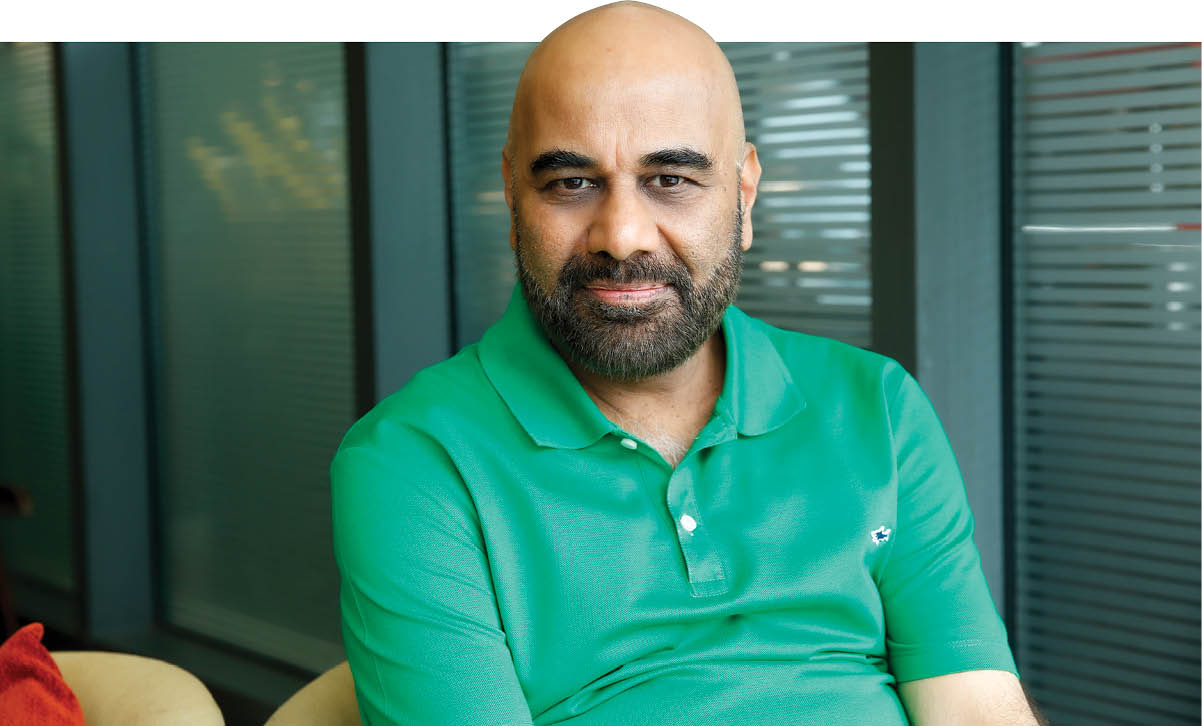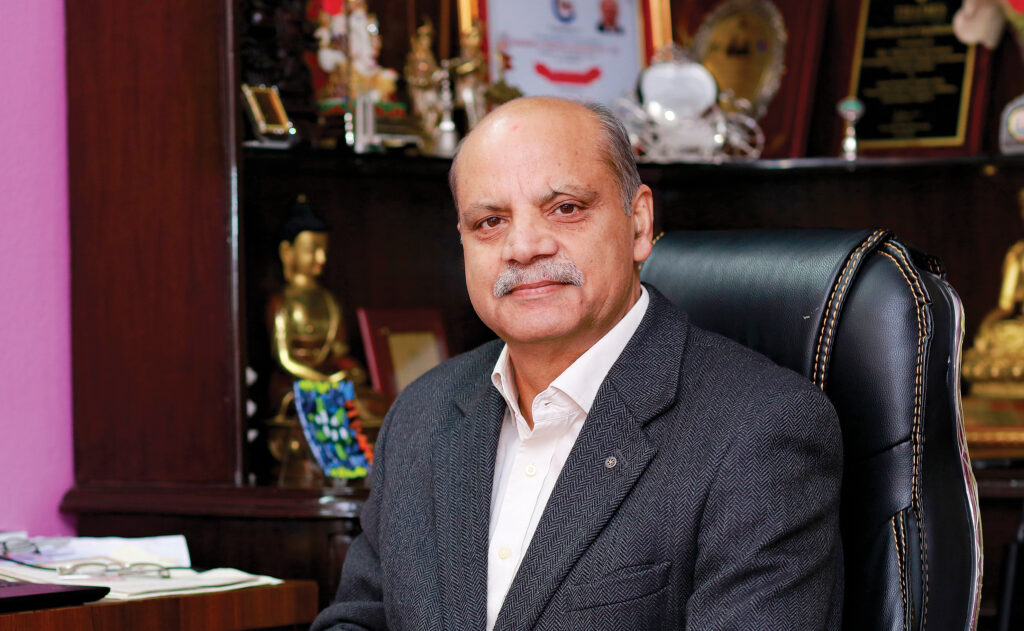 Elica PB Whirlpool Kitchen Appliances Pvt. Ltd, a subsidiary of Whirlpool India, is a well-known name in the international kitchen appliances market. The company is regarded for its wide range of products including kitchen hoods, chimneys, ovens, and cooktops. For the last six years, Elica has been catering to Nepali consumers with its products that are uber-stylish and have highly aesthetic designs. the HRM caught up with Pralhad Bhutada, CEO and Managing Director of Elica PB Whirlpool Kitchen Appliances who was recently in Kathmandu to talk about the company’s business in Nepal, market prospects, and Elica’s 2021 acquisition by Whirlpool India, among other topics. Excerpts:
Elica PB Whirlpool Kitchen Appliances Pvt. Ltd, a subsidiary of Whirlpool India, is a well-known name in the international kitchen appliances market. The company is regarded for its wide range of products including kitchen hoods, chimneys, ovens, and cooktops. For the last six years, Elica has been catering to Nepali consumers with its products that are uber-stylish and have highly aesthetic designs. the HRM caught up with Pralhad Bhutada, CEO and Managing Director of Elica PB Whirlpool Kitchen Appliances who was recently in Kathmandu to talk about the company’s business in Nepal, market prospects, and Elica’s 2021 acquisition by Whirlpool India, among other topics. Excerpts:
Q: What brings you to Nepal this time?
A: This is my sixth trip to Nepal. Usually, I come here once a year to check out how things are changing in the market, to observe the opportunities that are coming up and the challenges we might face, and also to figure out what kinds of products Nepali customers need. This time, my main objective is to conduct a review that we’ve not done for a while. Our Nepali partner Chaudhary Group also invited me to be part of the opening of the first Elica brand shop at Teku in Kathmandu.
Q: What kinds of products are available in Nepal? How is the Nepali market for Elica?
A: We have most of the products available here that we sell in India. Looking at the market in Kathmandu and Nepal, I don’t think we need to offer our entire lineup. However, we have a good variety of the products that we sell here. Speaking about the market, it’s changing rapidly. Every time I come here, I notice the changes. Consumers are more focused on lifestyle nowadays. I believe this trend will continue to grow for the next 15-20 years.
Currently, Elica electric chimney is our most popular product in Nepal. Besides, we also offer gas stoves. Talking about the products, there’s a notable distinction in terms of designs and quality. While you might find similar products for half the price, such products usually come compromised in terms of quality. Their quality and technology don’t match up to our standards.
Elica products stand out due to robust quality and appealing designs, ensuring they are suitable for long-term use by consumers. The price is higher compared to the cheaper alternatives available in the Nepali market. For instance, in India, the price of a chimney is around IRs 11,000 which goes up to Rs 30,000-35,000 in Nepal due to customs duties and transportation costs.
Q: You introduced electric hoods in India in 1995 and have nurtured the industry since then. Are you satisfied with the evolution of the industry?
A: We introduced a range of products that were tailor-made for the Indian market. Prior to that, we had a basic version electric hood that didn’t gain much traction in the market due to its lower quality and technology. So, around 1995-1996, we introduced what we considered the right product for the Indian market. These products were of Italian origin. This journey has been both rewarding and full of challenges. I’ve truly enjoyed the process of developing this category. Throughout this journey, I’ve worked on envisioning the right products and identifying the necessary technologies for the market. These insights have been central to my experience.
Q: As an entrepreneur, what were the key challenges that you faced and how did you overcome them?
A: Starting Elica was a bold move, and it wasn’t an easy one. We had to establish a strong brand image in the eyes of consumers. Convincing urban Indian consumers to adopt chimneys was a challenging task. In 1995-96, when we introduced chimneys, most Indians were unfamiliar with this technology and weren’t really interested. We printed leaflets explaining why electric chimneys were necessary. We went from door to door, discussing the benefits of chimneys. There was a common misconception that chimneys weren’t suitable for Indian kitchens due to the heavy use of cooking oils.
The first five years were particularly tough. We started with basic straight-line chimneys. It was in 2000 when we launched decorative products for the first time. Concurrently, we introduced built-in hoods in India. Only those who had experienced the Western culture and traveled widely were aware of chimneys. The journey was arduous because only a small percentage of people knew about chimneys.
Around 2003/04, we introduced built-in appliances. Every time we launched new products, it was a matter of time before Indian consumers understood and adopted these technologies. In those days, and even now, people wholeheartedly follow western trends, lifestyles, and products. Initially, these products were imported and were accessible only to the elite. Patience was the key. We persisted and never gave up. More and more consumers started buying these products as modular setups gained popularity. Partnering with a large worldwide brand was an enriching experience. The way to expand is often by aligning with bigger brands, provided they recognize the value of your innovations, as Whirlpool did. They saw the potential in our partnership. I’ve never had an ownership-focused attitude. I’ve always operated as a professional, placing the company’s interests before individual goals, as they are mainly driven by the company’s objectives.
Q: What were the reasons behind Whirlpool’s acquisition of Elica?
A: The acquisition was driven by the recognition that Elica was a well-established brand in the domains of hoods and built-in appliances. Whirlpool also sought a brand that possessed market value and recognition. This acquisition presented a mutually beneficial scenario. Elica was already positioned as a premium brand, and the partnership proved advantageous for both parties involved.
Q: Tell us about the plant of Elica in India.
A: In 2010, we established the plant and gradually expanded its footprint. Beginning at 35,000 square feet, the plant has now expanded to nearly 90,000 square feet. Additionally, we’ve established a warehouse spanning 50,000 to 60,000 square feet. Our focus is on continually growing in Indian and Nepali markets. We’re proud to have garnered a positive reputation in both markets.



